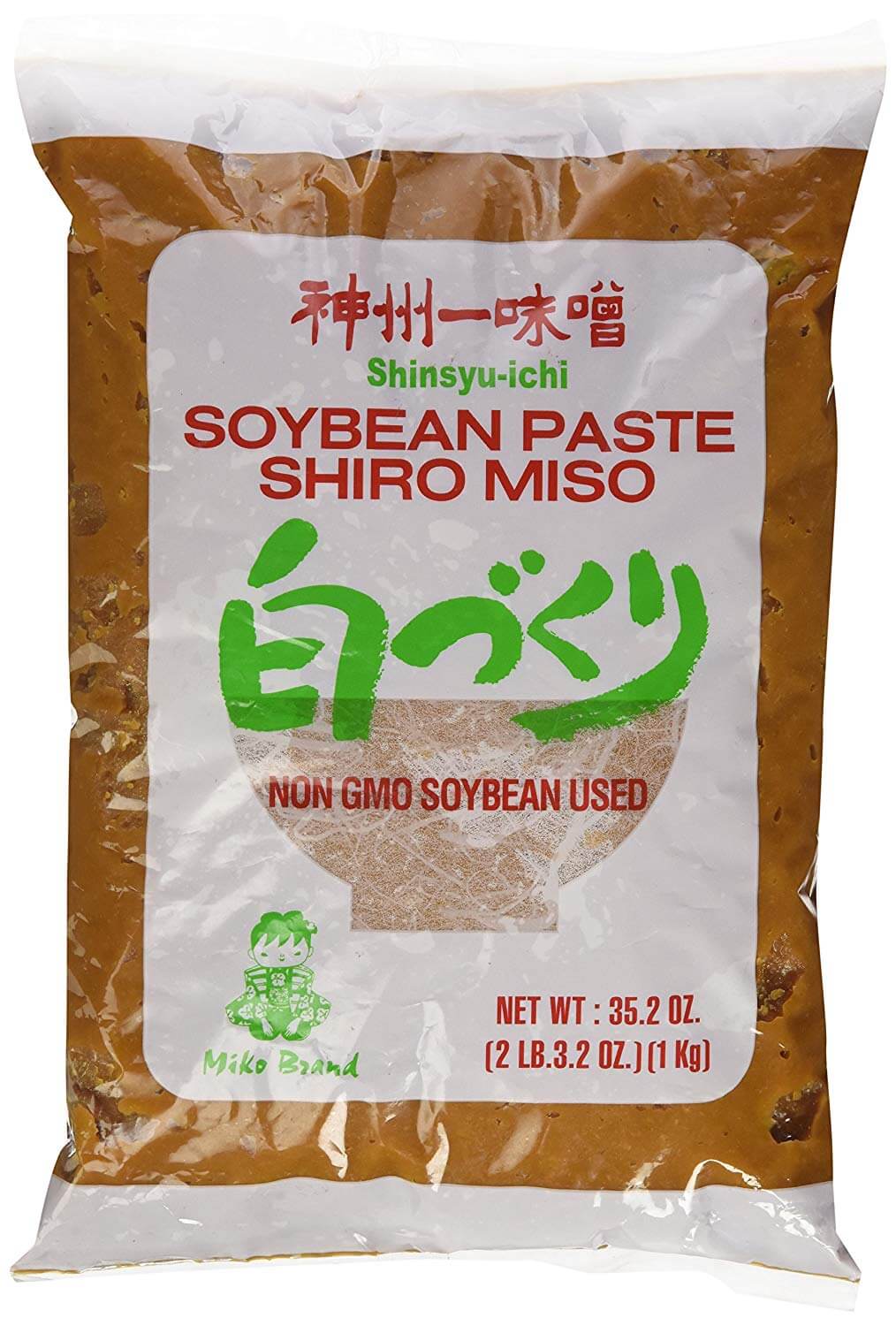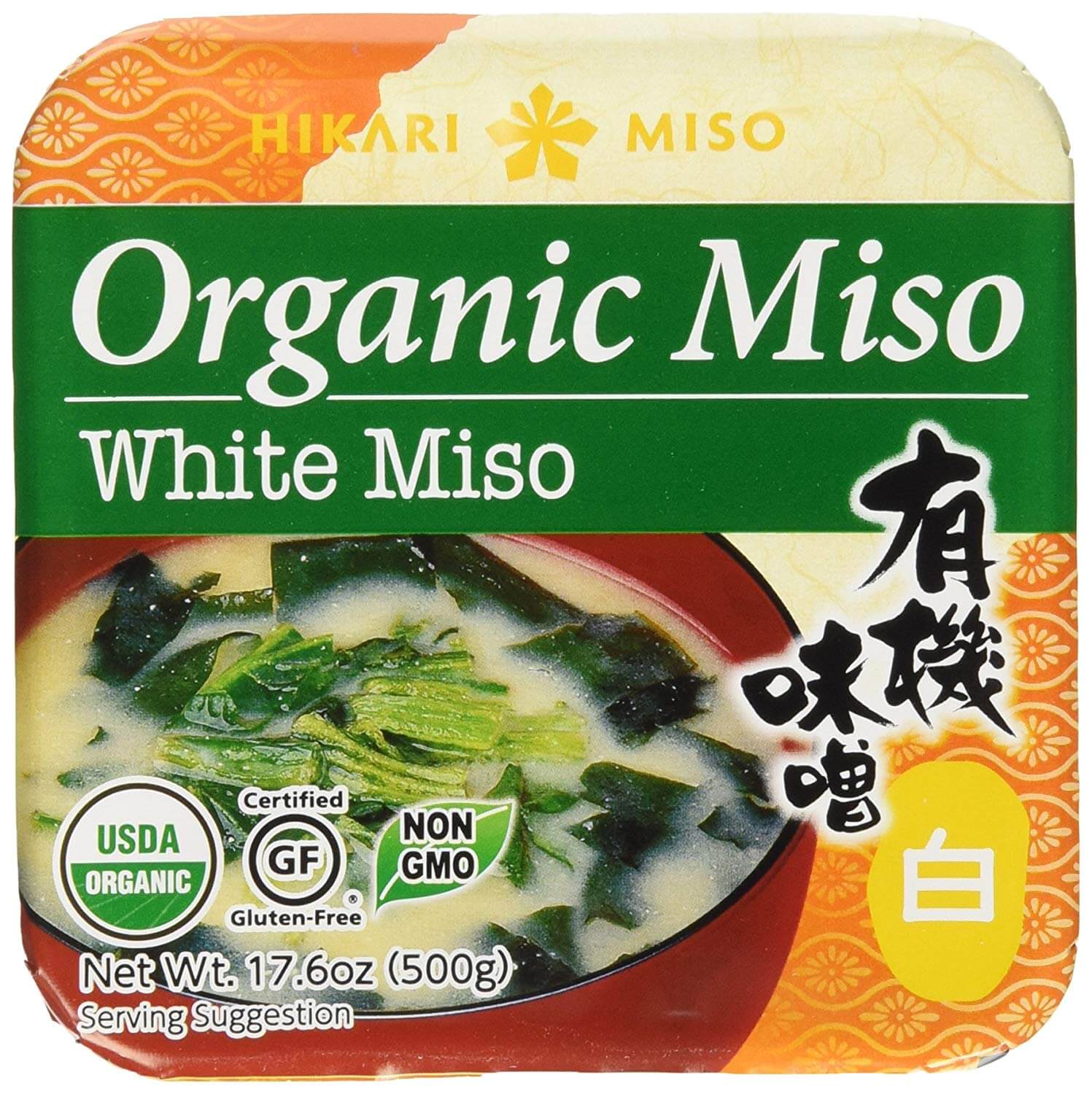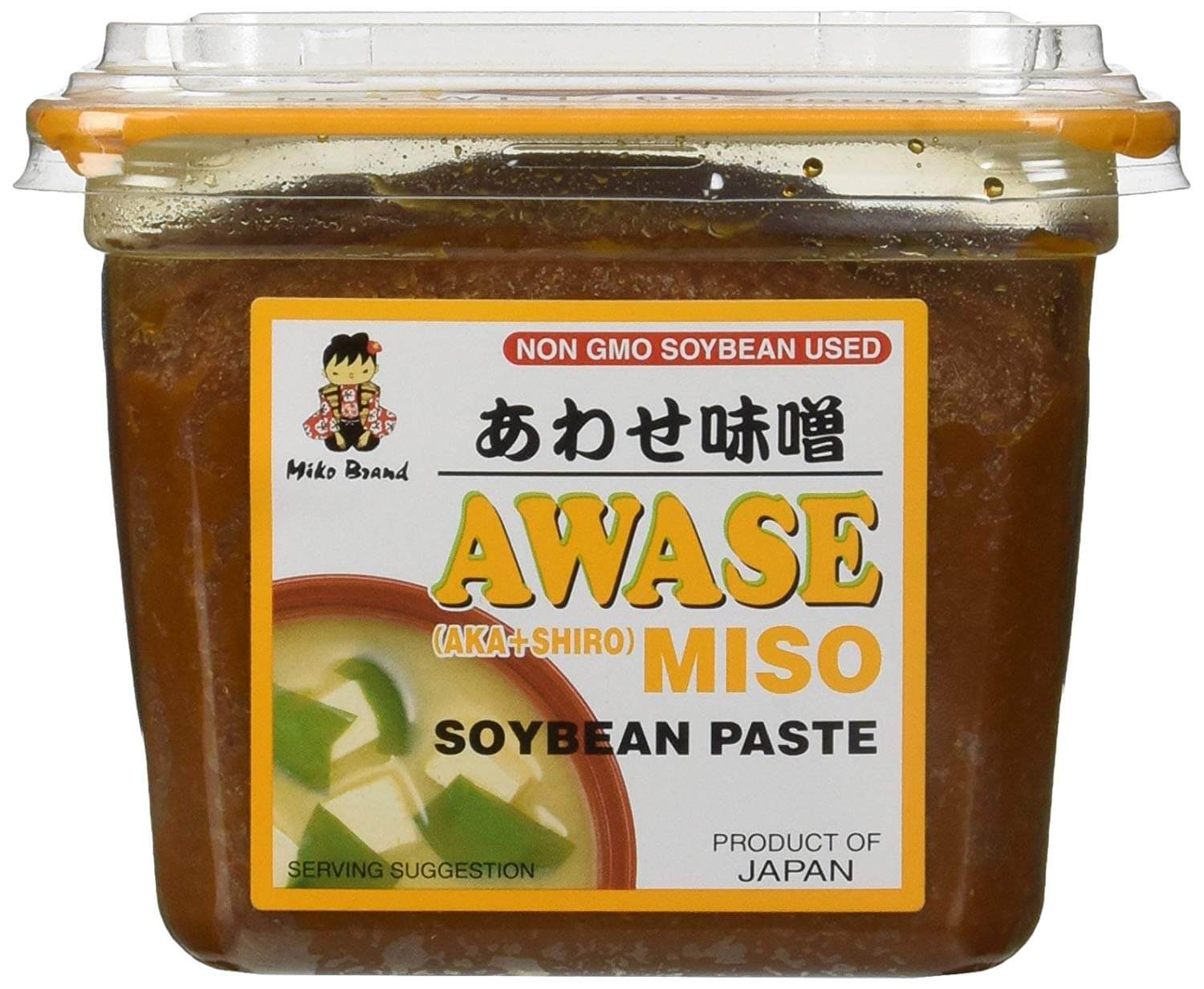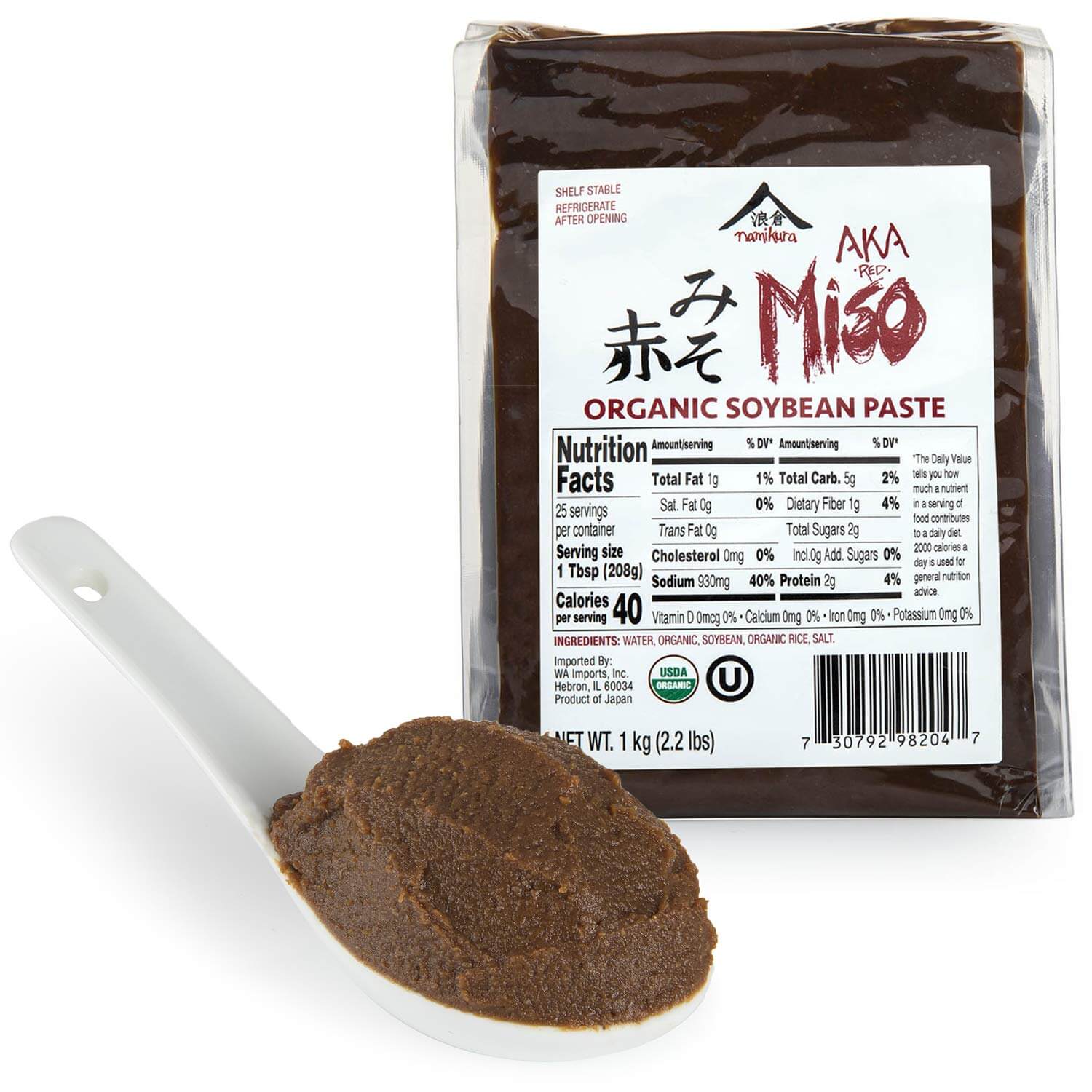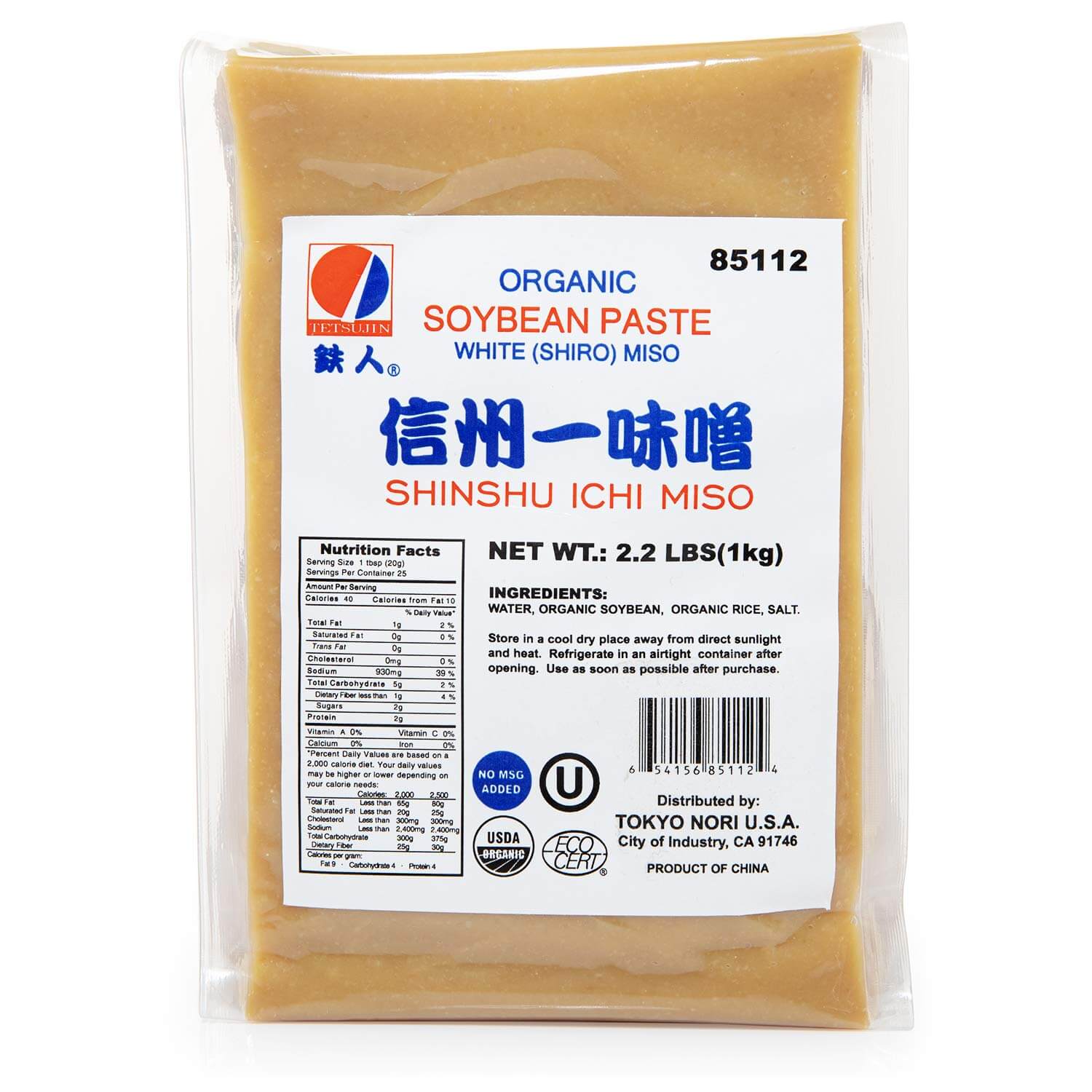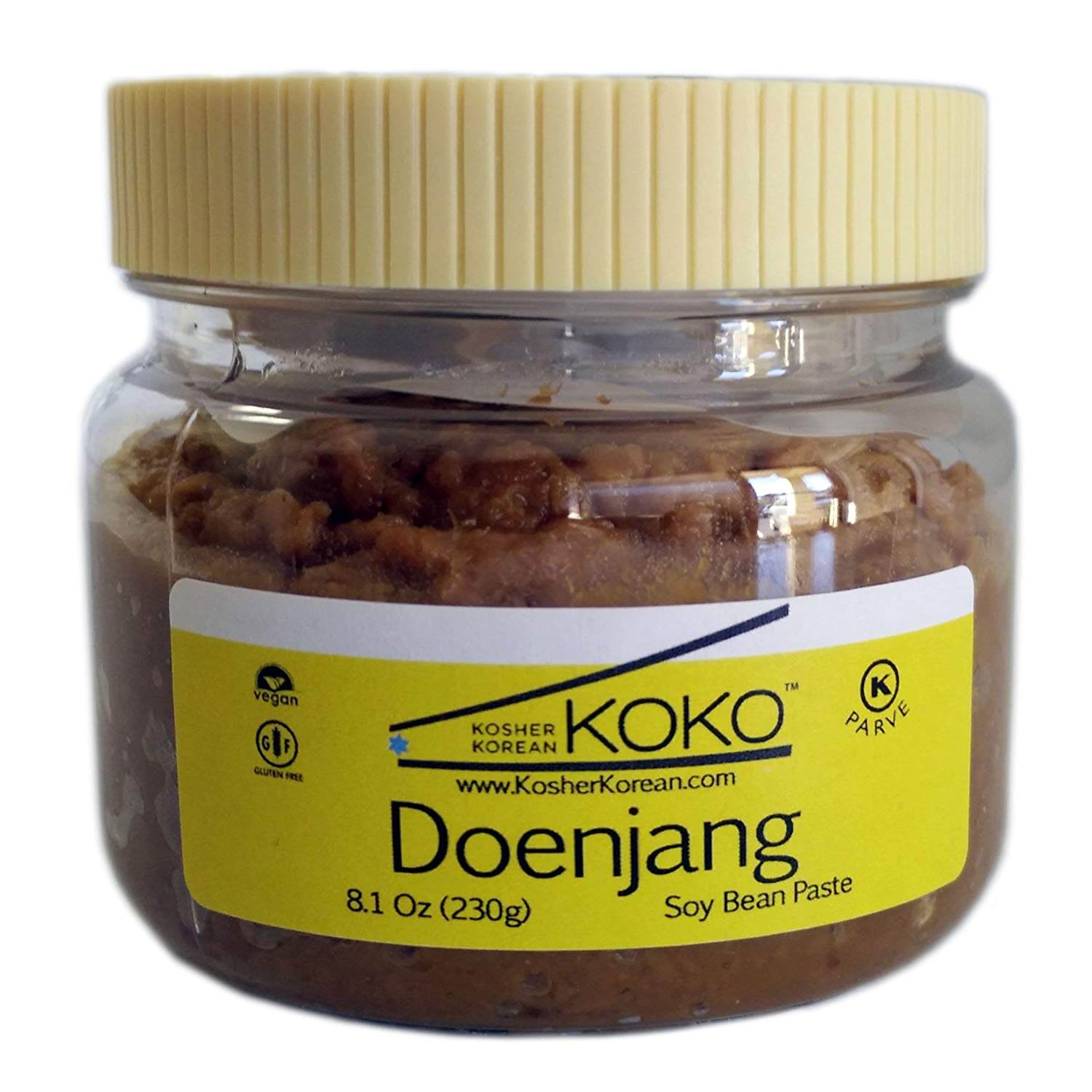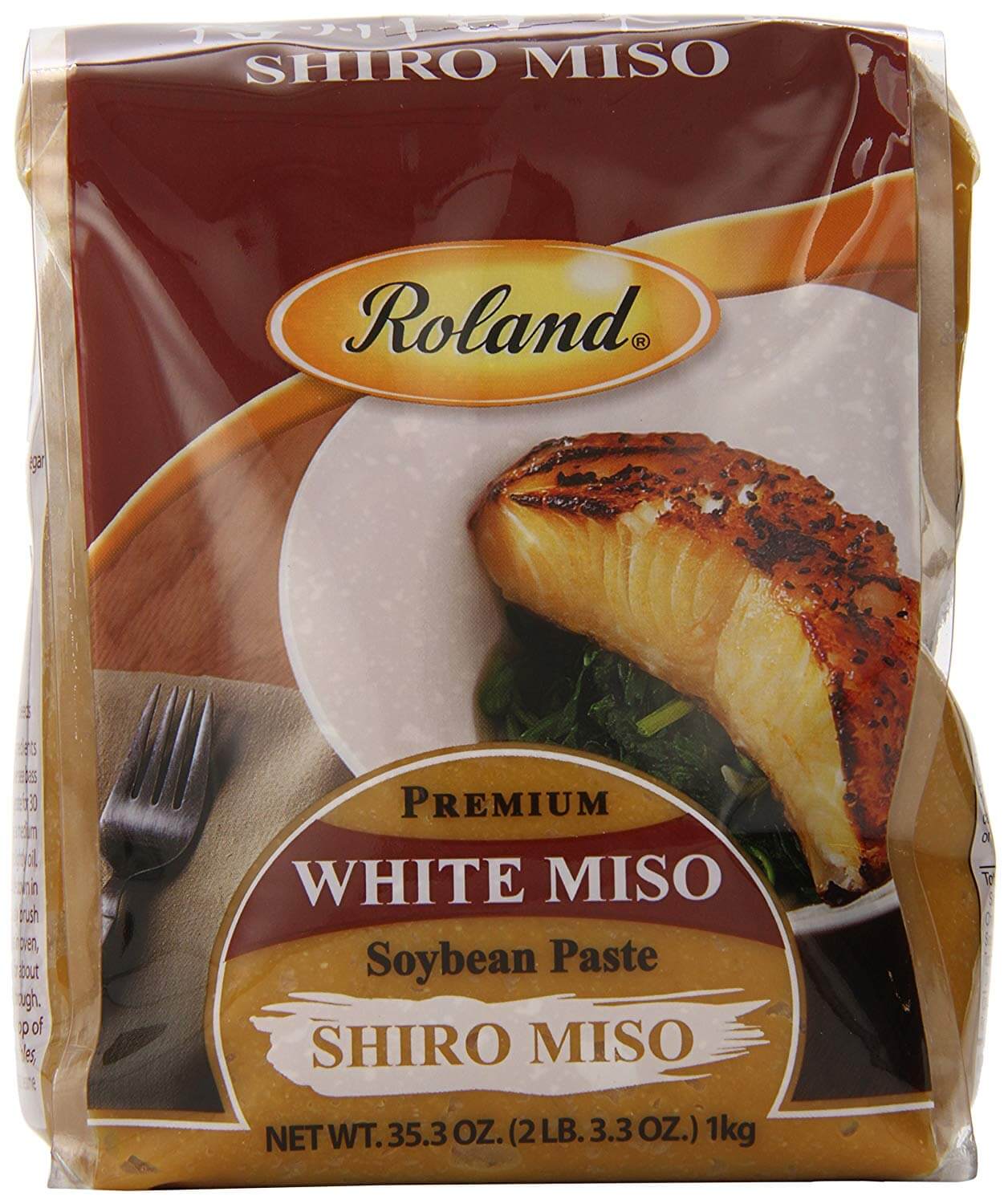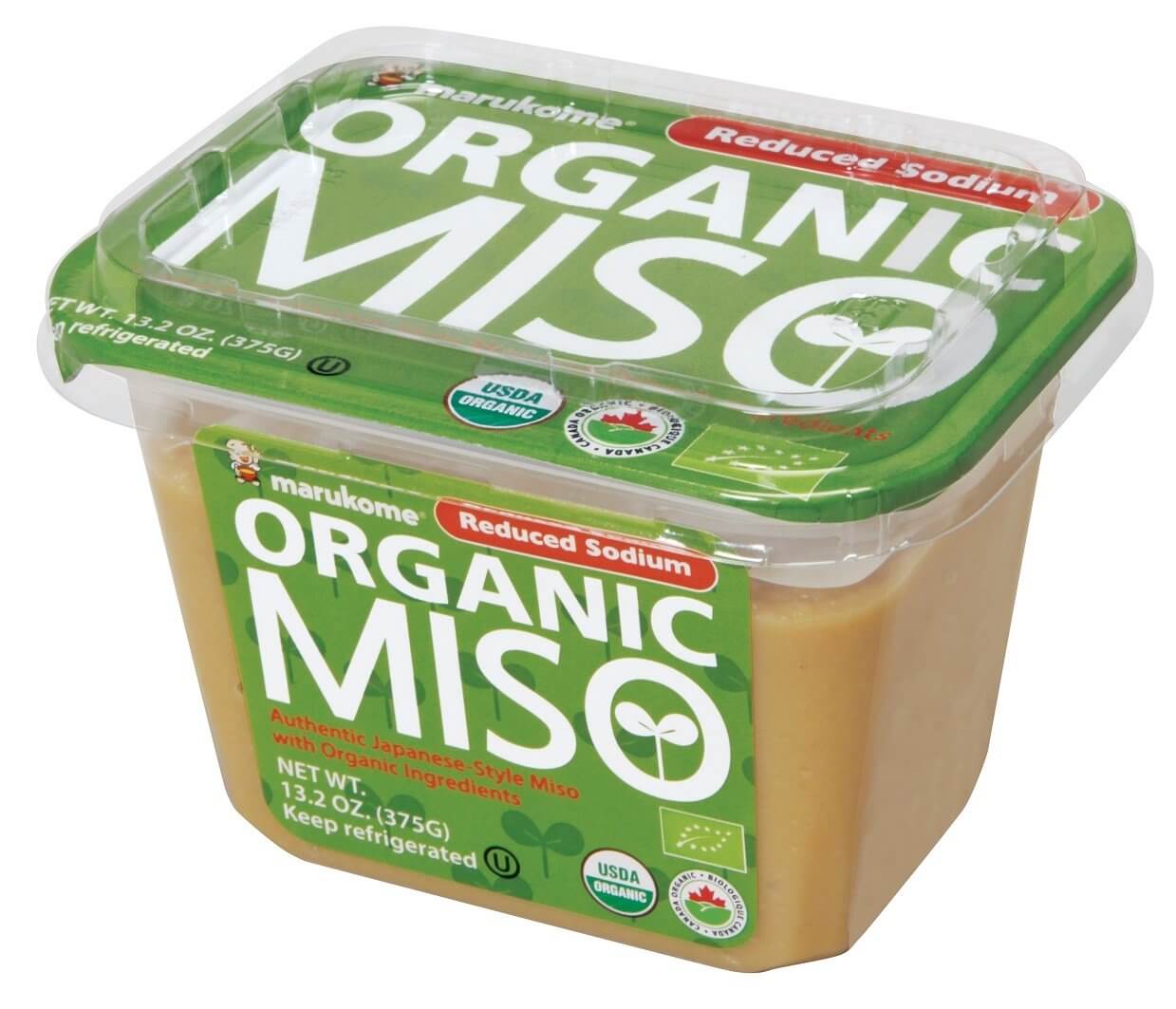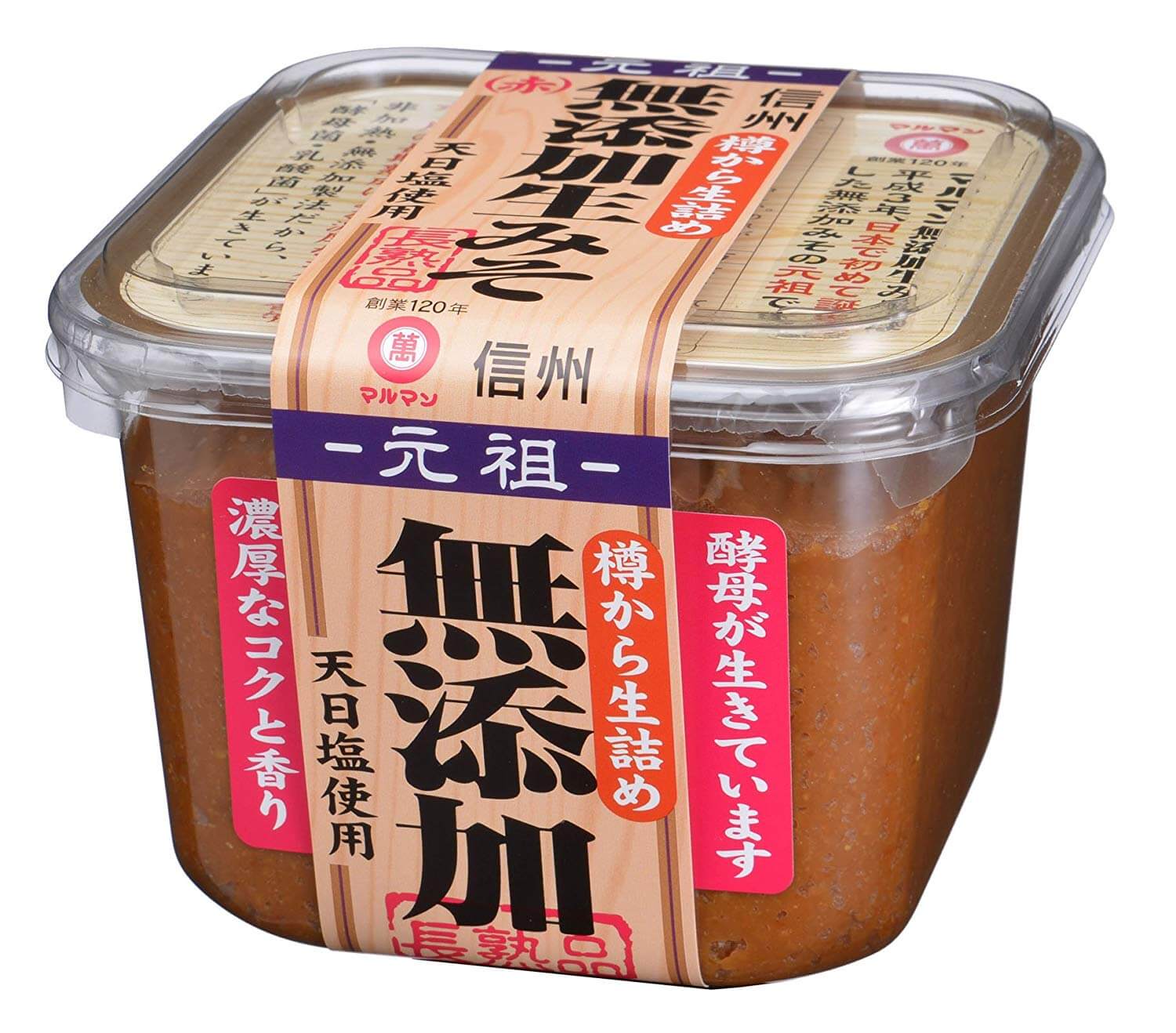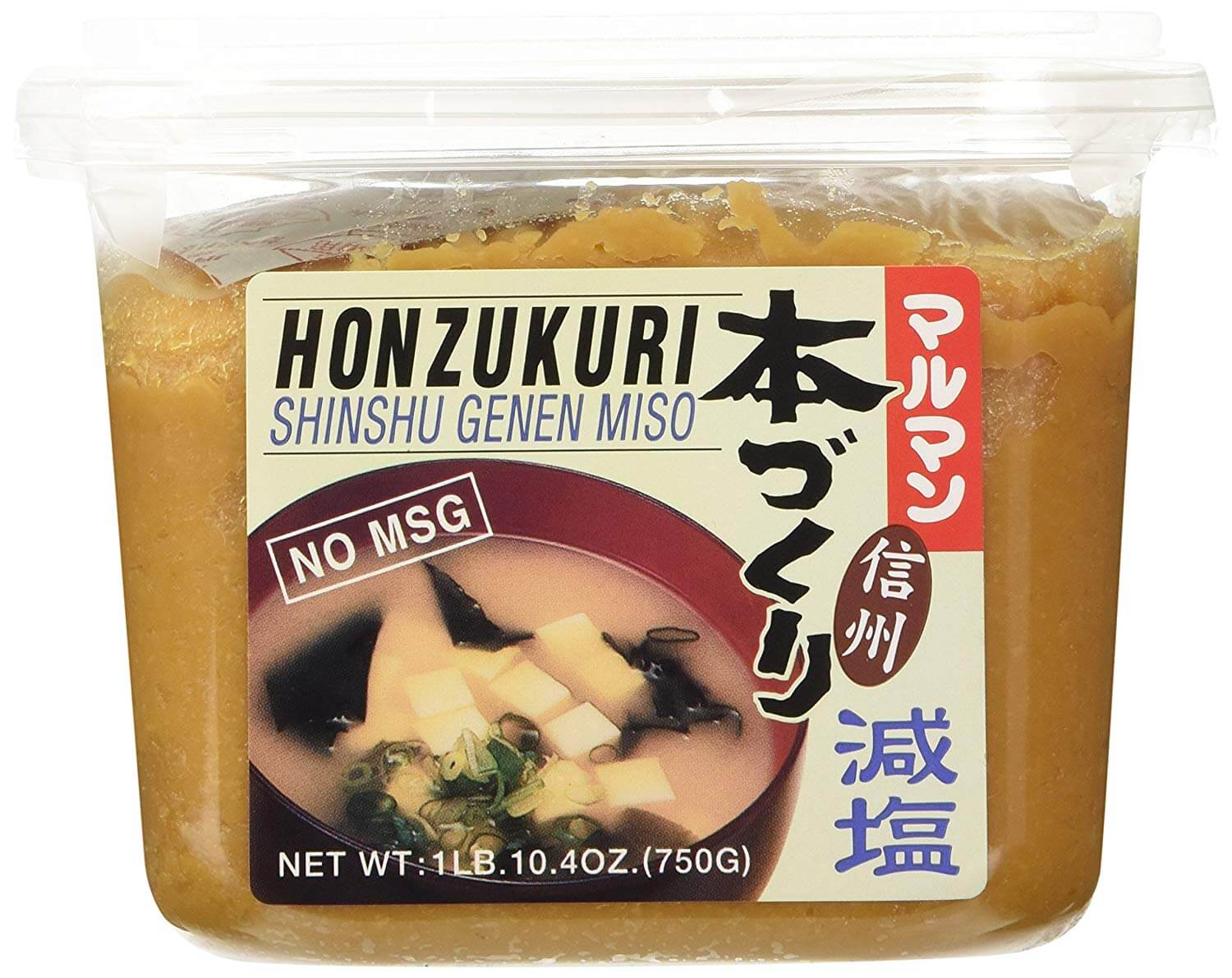If you want to add a little more umami to your day, then try adding a little miso paste to your cooking. An important ingredient in Japanese cuisine, miso paste is used in soups, as meat and fish marinades and for pickling vegetables with. It also adds flavor to ramen, stir fries, vegetables, mayos, slaws and more.
Although there are many types of miso paste, white or red are the two main types or colors of miso paste available to us in the US and in this article, we look at some of the things to consider before buying miso paste. In order to help you select your next miso paste buy, we have also undertaken some reviews of the best white miso pastes as well as some reds and awase miso.Best Pick
The non-GMO Miko Brand soybean paste shiro miso is our pick of the best white miso pastes as a white miso which comes packaged with that all-important miso soup recipe!
Budget Pick
The organic and MSG-free Hikari Miso organic white miso is our budget and certified gluten free pick of the white miso pastes.
Quick Comparison: Top 10 Best Miso Paste for Miso Soup, Stir Fries or Meat Marinades
1. Miko Brand Soybean Paste Shiro Miso
Highlighted Features
-
A 35.2 oz pack of white miso paste made in Japan
-
Made from soybean, rice malt, salt and alcohol as preservative
-
The soybeans are non-GMO and this miso does not contain any added MSG
-
The packaging includes a recipe for miso soup
Produced in Japan, the Miko Brand soybean paste shiro miso is made from Non-GMO soybean and does not contain any MSG. Coming as a 35.2 oz pack, the packaging also contains a recipe for miso soup.
This white miso is made with soybean, rice malt and salt and also contains alcohol as a preservative. This will remain shelf stable for some time although there is some confusion amongst buyers as to whether this should be refrigerated before opening. As a fermented paste it should not require refrigerating until opened. The packaging on this is non-resealable, so you will need to store it in another container when you do open it.Pros
-
White miso
-
Made in Japan
-
Non-GMO
-
Free from added MSG
-
Includes miso soup recipe
Cons
-
Contains alcohol as a preservative
-
You cannot reseal the packaging after opening
2. Hikari Organic Miso Paste
Highlighted Features
-
Certified USDA organic white miso in a 17.6 oz resealable container
-
Does not contain any added MSG, additives or GMO ingredients
-
Made in Japan with organic rice, soybeans, salt, yeast and Koji culture
-
Certified as gluten free
Made from 100% organic rice and soybeans along with salt, yeast and Koji culture, the Hikari Miso organic white miso is free from any GMO ingredients, additives and MSG. As well as being certified USDA organic, it is also certified gluten free. This paste is made in Japan through a long fermentation process to give its distinctive rich and deep taste and aroma.
This comes as a 17.6 oz container which can be resealed after opening, although some buyers have received the pack damaged, allowing the paste to leak out. The odd buyer also considers that the color is darker than expected possibly due to shorter expiration dates.Pros
-
White miso
-
USDA organic
-
Gluten free
-
No added MSG
-
Made in Japan
-
Resealable container
Cons
-
There is a risk of the resealable pack being damaged
-
The color of this may be darker than you would expect for a white miso
3. Miko Brand Awase Miso Paste
Highlighted Features
-
A 17.6 oz pack of awase miso which is a blend of red and white miso pastes
-
This is produced in Japan
-
Made from soybean, rice malt and salt and uses alcohol as a preservative
-
The pack is resealable after opening
A blend of white and red miso, the Miko Brand awase miso paste is produced in Japan. The ingredients of this paste are soybean, rice malt, salt and alcohol as a preservative.
This comes as a 17.6 oz pack that can be resealed after opening. There is a risk of the packaging being damaged during shipping and as with other miso pastes, there can be some uncertainty as to whether it should be refrigerated before opening. The odd buyer has also been disappointed with the taste of this.Pros
-
Awase miso
-
Blend of white and red miso pastes
-
Made in Japan
-
Resealable pack
Cons
-
The odd buyer has not been as keen on the taste of this blended miso
-
Confusion over whether it should be refrigerated before opening
-
Contains alcohol as a preservative
4. Namikura Miso Co. Organic Red Aka Miso Paste
Highlighted Features
-
A 2.2 lbs. pack of organic red miso paste
-
Aged for at least six months with more soybeans and less rice
-
As well as being certified USDA organic, this is also certified kosher
-
Shelf stable but should be refrigerated after opening
The Namikura Miso Co. aka miso organic soybean paste is a red miso paste which has been aged for at least six months to give a stronger flavored and darker colored paste. This is also fermented with more soybeans and less rice, along with water and salt.
Made in Japan, this is certified USDA organic and is also certified kosher. This is a 2.2 lbs. pack which is shelf stable but should be refrigerated after opening. The packaging of this is not the best as there can be a chance of damage to the packaging seams and you will need to place it into another container for storage as the pack is not resealable.
Pros
-
Red miso paste
-
Aged for 6+ months
-
Organic
-
Kosher
-
Made in Japan
Cons
-
There is a chance that you may receive this with damaged packaging
-
The packaging is not resealable so you will need to store it in another container
5. Tetsujin Organic Shiro White Miso Paste
Highlighted Features
-
A 2.2lbs pack of white miso paste
-
Certified USDA organic and ECOCERT
-
Made from water, organic soybeans, organic rice and salt
-
Does not contain any added MSG
-
This paste is also certified kosher and comes with a satisfaction guarantee
The Tetsujin organic shiro paste is a white miso paste certified USDA organic and ECOCERT (organic certification organization). This paste is made from water, organic soybeans, organic rice and salt and does not contain any alcohol or added MSG. It is also certified kosher.
This paste has a distinctive, sweet and subtle taste with light umami aroma that works well in meat or fish marinades and salad dressings. This comes as a 2.2 lbs. BPA-free pack which is shelf stable until opened, when it should be refrigerated in an airtight container. This also comes with a satisfaction guarantee.
The odd buyer has been disappointed that this has been produced in China rather than Japan and there is a chance of the pack leaking during shipping. Some buyers would also prefer that this was available in a smaller size pack.
Pros
-
White miso
-
Organic
-
BPA-free pack
-
No added MSG
-
Kosher
-
Satisfaction guarantee
Cons
-
This is produced in China rather than Japan
-
Only comes as a larger 2.2 lbs. pack
-
Risk of the packaging leaking during shipping
6. Koko Doenjang Korean Miso
Highlighted Features
-
Korean miso paste or doenjang which is imported from Korea
-
Made with dried fermented soybeans and salt
-
Available in three different sizes of jar
-
Certified kosher, gluten free and vegan
Imported from Korea, KOKO Doenjang soy bean paste is a Korean miso paste which is kosher certified. It is also certified vegan and gluten free. Used in many Korean soups, this is similar to a Japanese miso paste. This comes in three sizes of plastic jar, including an 8.1 oz jar and it is made from dried fermented soybeans and salt. Doenjang does have a slightly different texture to miso paste as which you may not be as keen on, depending on how you want to use it.
Pros
-
Korean miso paste
-
Made in Korea
-
Kosher
-
Vegan
-
Gluten free
Cons
-
Has a different texture to Japanese miso
-
Does not contain any rice or barley like typical miso pastes
7. Roland White Miso Paste
Highlighted Features
-
A twin pack of 35.3 oz bags of white miso paste
-
Made from water, soybeans, rice, salt and alcohol
-
This does not contain any gluten
-
Is manufactured in Japan
Produced in Japan, the Roland shiro miso is a white miso paste which is gluten free. This is made from water, soybeans, rice, salt and alcohol and comes as a twin pack of 35.3 oz bags. Although a white miso, a number of buyers have found it to be darker in color than expected. As a larger quantity this may also be too big for some households.
Pros
-
White miso paste
-
Made in Japan
-
Gluten free
-
Larger pack
Cons
-
As a larger pack, this may be too big for your household depending on how much you use
-
Some buyers have found this to be a darker paste than they would expect for a white miso
-
Contains alcohol as a preservative
8. Marukome Reduced Sodium Organic Miso
Highlighted Features
-
A 13.2 oz resealable pack of reduced sodium white miso
-
This is an authentic Japanese-style miso made in the US by the largest Japanese miso manufacturer
-
Contains 25% less sodium than a standard white miso
-
Certified by USDA organic and Canada Organic
-
Also certified as gluten free and kosher
The Marukome reduced sodium organic miso is an authentic Japanese-style white miso which is certified USDA organic and Canada Organic. It is also certified kosher and is gluten free. Made in the US by Japans largest producer of miso, this contains 25% less sodium than a standard miso and is made with water, organic soybeans, organic rice, sea salt and organic alcohol. Coming as a 13.2 oz resealable pack, this is shelf stable but should be refrigerated once opened.
There is a chance of the packaging being damaged during shipping and the odd buyer considers this tastes saltier than other low sodium miso paste and as it is lower sodium, it can bring a different flavor to a dish.Pros
-
White miso
-
Reduced sodium
-
Organic
-
Kosher
-
Gluten free
Cons
-
Some buyers consider this is saltier than other lower sodium pastes
-
As it is reduced sodium, some may find it gives a slightly different taste to the dish
9.Maruman Organic Red Miso
Highlighted Features
-
A 26.4 oz pack of red miso
-
The container is resealable after opening
-
This is made in Japan and certified as organic in Japan
Coming as a 26.4 oz container which is resealable, the Maruman organic red miso is produced in Japan. As a red miso this is saltier in taste and although this is organic, it is only currently registered organic in Japan, rather than in the US. Some buyers have been disappointed to find that the labelling is Japanese rather than English.
Pros
-
Red miso
-
Made in Japan
-
Organic
-
Resealable pack
Cons
-
Not currently registered as organic in the US, just in Japan
-
Japanese rather than English labelling
10. Honzokuri Low Salt Miso
Highlighted Features
-
A miso genen or low sodium miso which is made in Japan
-
Free from any added MSG, this is made with soybeans, rice, salt and water
-
This comes as a 26.4 oz pack which is resealable
-
Contains 6980 mg of sodium per serving
The Hozukuri miso genen is a low sodium miso made in Japan from soybeans, rice, salt and water. It does not contain any added MSG. Coming as a 26.4 oz container, you can reseal once open, although there can be a risk of you receiving the container damaged.
As this still contains 690 mg of sodium per serving, you may want to treat this as a reduced sodium rather than low sodium misoPros
-
Miso genen (low salt miso)
-
Made in Japan
-
Free from added MSG
-
No added alcohol
-
Resealable pack
Cons
-
Still contains 690 mg of sodium per serving so you may want to treat as reduced rather than lower sodium
-
The container can be prone to damage during shipping
Things to Consider Before Buying Miso Paste
Miso paste is made with cooked soybeans, a grain such as rice or barley which has been cultured with Koji (a mold), water and salt. A small quantity of miso from an earlier batch is usually included to help get the fermentation started.
This mixture is then left to ferment for anything from a few months to a few years. As it ferments it thickens and darkens. Miso which has been fermented longer has a more complex taste and aroma and is saltier.
Popular in miso soup, where it is mixed with dashi soup stock, you can use miso it in a wide range of recipes, although however you use it, always avoid boiling any dishes with miso in them. As miso is live (like yogurt), the boiling temperature will kill off those beneficial bacteria.
Miso is usually best added at the end of the cooking when the heat is low or turned off. As miso doesnt soften quickly, straining it into the dish, or mixing it in a separate dish with some stock before putting it in the pan will ensure that you do not end up with miso lumps.
The same thing applies if you are using it in salad dressings, try thinning it with sake or olive oil before adding to the dressing.
There are around 1,300 kinds of miso. Where it is made, the type of Koji culture used, ingredient proportions and how it ferments are some of the factors that distinguish different miso pastes. Miso paste is often categorized into colors, with white and red being the main colors of miso paste available in the US. As miso is so often used in miso soup, you may sometimes find miso paste that already has dashi stock added (dashi iri).
White Miso Paste (Miso Shiro)
The best miso paste for soup made at home is often a white paste. This is because white miso or shiro miso has a lighter and smooth flavor as it is made from soybeans with a higher proportion of rice. It is also fermented for a shorter time than other miso pastes.
Also known as mellow or sweet miso, white miso is popular in Japanese cuisine for fish marinades and dressings. You can also use it in light sauces and even desserts, and it can take the place of dairy in some recipes such as mashed potatoes. The color of white miso paste is usually beige to light yellow.
When choosing the best white miso paste, look for minimal ingredients. Alcohol is not a key ingredient in miso, so you can choose a paste without. Because white miso does not need to be fermented as long, some producers add preservatives (such as alcohol) to replace the time that it would otherwise have been fermented.
Similarly, a white paste that has been pasteurized will have been produced quickly rather than being left to ferment - fermentation would otherwise replace the need for pasteurization.
Also look for sensible packaging that is easy to open and can be resealed after opening. There are also a range of non-GMO and organic pastes available. Most Japanese miso pastes labeled as yuuki are organically grown rather than GM soybeans and miso labeled as mutenka is often non-GMO.
Red Miso Paste (Miso Aka)
Considered to be any dark miso paste, red miso paste (miso aka) is usually a shade of brown and chunkier than white miso. A red miso is stronger with a more complex umami flavor than white miso as it has been aged for longer often for between one and three years.
Miso aka also contains a higher proportion of soybean to rice than white miso. Red miso will give flavor to marinades and suits richer stews and braises. Do remember to add any extra salt when the dish is finished as red miso can be very salty.
Red miso is often used in miso soups served in Japanese restaurants because of its depth of flavor, but it does need to be used very carefully to prevent it from overpowering the other flavors.
Awase Miso Paste
Awase miso is a miso that contains a blend of two of more miso pastes, although technically an awase miso is just a blend of red and white miso pastes. If you are looking for a general-purpose miso for a range of dishes, or even trying to find the best miso paste for ramen, then an awase miso can offer some of the sweetness and smoothness of a white paste with the extra umami from the red.
You can use red or white miso interchangeably in your recipes, just take more care when substituting white miso for red; adding less and always tasting before you add more.
Storing Miso
Miso is shelf stable before opening so can just be stored in a kitchen cabinet or pantry. Once opened, the package should be resealed, or if it cannot be resealed, then place a piece of parchment or plastic wrap over where the packaging is open and then place it into an airtight container. This must then be refrigerated.
As it is fermented, miso paste can be stored for a long time safely, although it can darken in color over time. This can still be used but may be better used up in stir fries and similar rather than in soups. You can also freeze miso paste.
Conclusion
In this article we have offered a basic introduction into three of the main types of miso paste and just a few of the ways you can use it to add umami to your cooking. We have also provided a few helpful hints when using miso and confirmed that miso is shelf stable until opened, at which point it must always be refrigerated.
So whether you are looking for the best miso paste for soup, or even the best miso paste for ramen then we do hope that our reviews of a selection of the best miso pastes have been helpful.The post The 10 Best Miso Paste for Miso Soup, Stir Fries or Meat Marinades appeared first on Food Shark Marfa .

